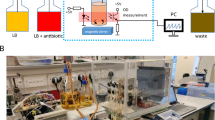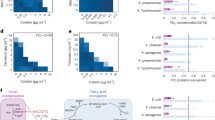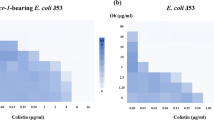Abstract
COLICINES are unique among antibiotics in being specifically adsorbed on to the surface of bacteria in a manner analogous to antibodies and bacteriophages. Besides being removed from solution by adsorption on sensitive bacteria1, they can be inactivated by extracts of sensitive, but not of resistant, organisms2. The nature of colicine receptors on the bacterial surface has not so far been elucidated. This communication describes some preliminary observations on the subject.
This is a preview of subscription content, access via your institution
Access options
Subscribe to this journal
Receive 51 print issues and online access
$199.00 per year
only $3.90 per issue
Buy this article
- Purchase on SpringerLink
- Instant access to full article PDF
Prices may be subject to local taxes which are calculated during checkout
Similar content being viewed by others
References
Jacob, F., Siminovitch, L., and Wollman, E., Ann. Inst. Pasteur, 83, 295 (1952).
Bordet, P., and Beumer, J., C.R. Soc. Biol., 142, 259 (1948).
van Horn, Elizabeth A., M.Sc. thesis, University of Bristol (1961).
Author information
Authors and Affiliations
Rights and permissions
About this article
Cite this article
MAYR-HARTING, A. Nature of Colicine Receptors. Nature 192, 191 (1961). https://doi.org/10.1038/192191a0
Issue date:
DOI: https://doi.org/10.1038/192191a0
This article is cited by
-
The question of bacterial receptors for colicins
Folia Microbiologica (1966)
-
Properties of a bacteriocin-like substance produced byStreptomyces virginiae
Antonie van Leeuwenhoek (1964)



